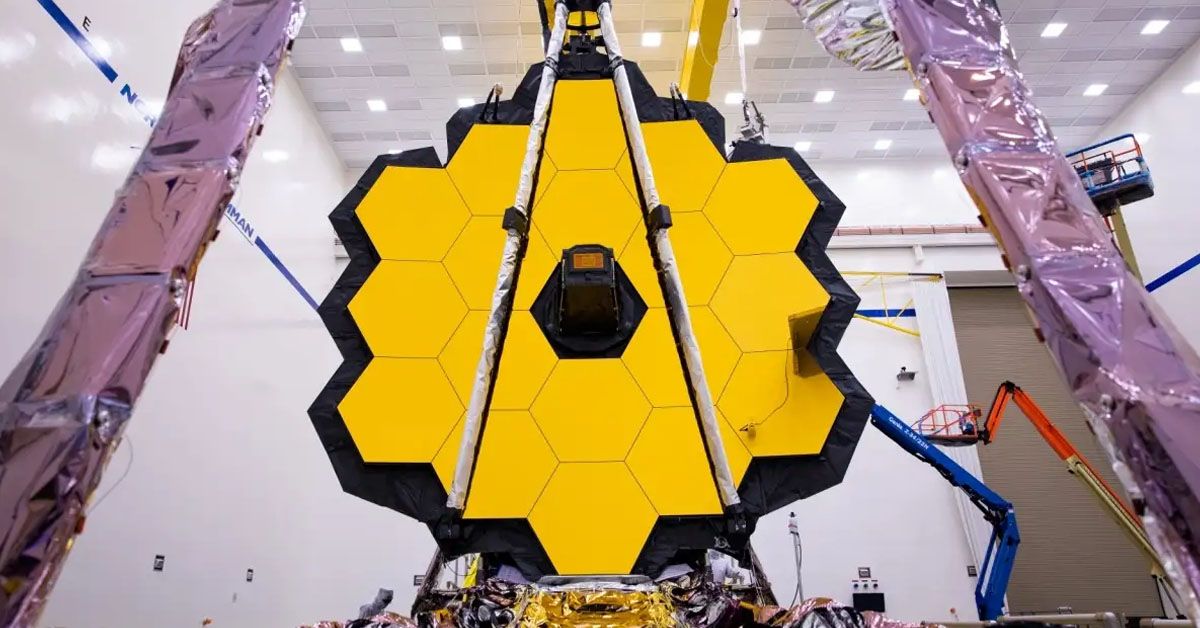In the vast, dark expanse of the cosmos, a new guardian of the stars emerges, unlocking the secrets of the universe and providing us with an unprecedented view of its mysteries. Welcome to the era of the James Webb Space Telescope (JWST), the world's most powerful space observatory to date. Poised to revolutionize astronomy and space exploration, the JWST is set to take us on an awe-inspiring journey, revealing the birth and evolution of galaxies, stars, planets, and perhaps even the origins of life itself.
With cutting-edge technology and a monumental scientific ambition, the JWST stands as a testament to human ingenuity and the unquenchable thirst for knowledge. As the successor to the venerable Hubble Space Telescope, it is poised to carry the torch of discovery further than ever before. From the first light after the Big Bang to the tantalizing search for extraterrestrial life, the James Webb Space Telescope is our cosmic emissary, providing us with unparalleled insights into the enigma that is the universe.
Design And Features Of JWST
Size And Dimensions
The James Webb Space Telescope boasts an impressive size and structure, with dimensions that surpass its predecessor, the Hubble Space Telescope. The JWST measures 21.3 meters (69.9 feet) in length and 14.2 meters (46.6 feet) in width, with a total mass of approximately 6,200 kilograms (13,668 pounds). This colossal structure is made possible by its innovative design, which allows for the deployment of a large, segmented primary mirror and a tennis court-sized sun-shield.
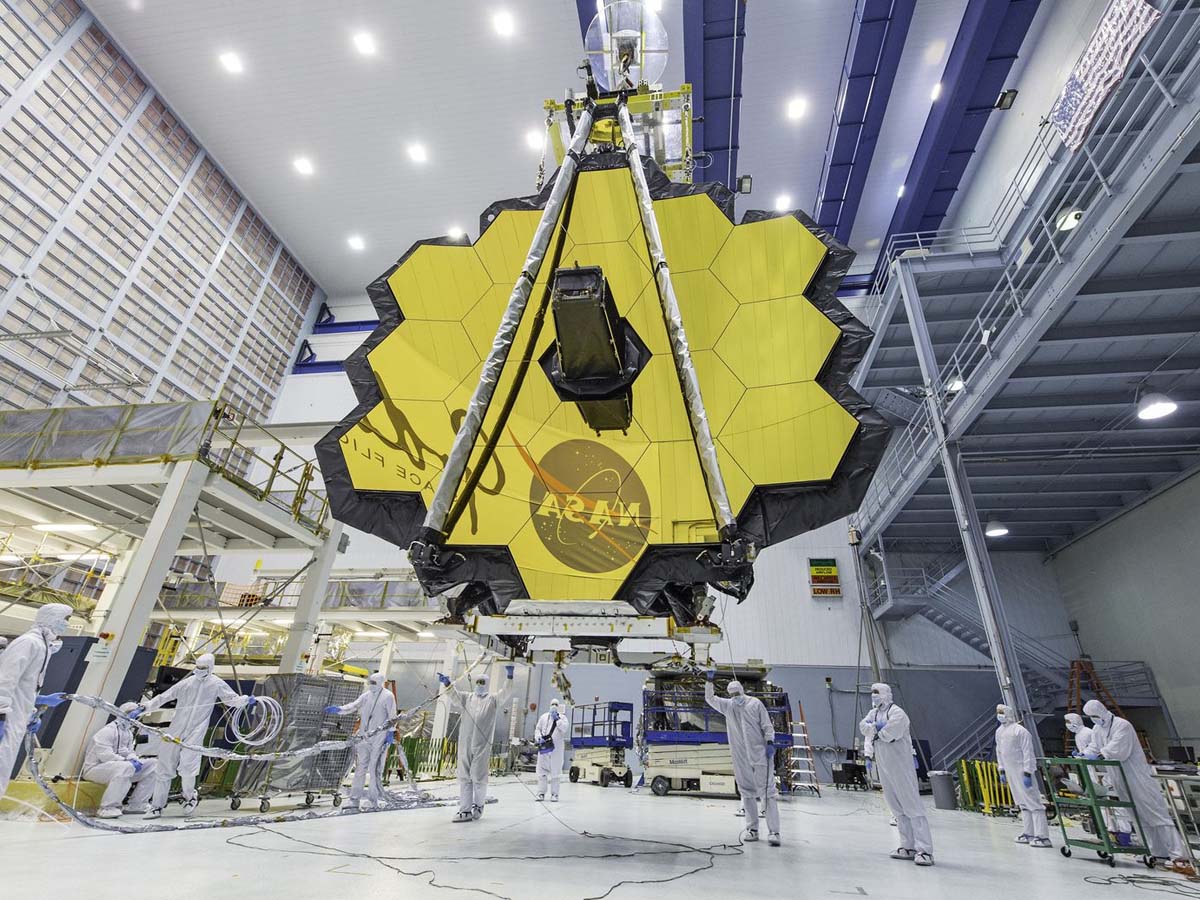
Infrared Capabilities
One of the most significant features of the JWST is its advanced infrared capabilities. Unlike the Hubble Space Telescope, which primarily observes visible and ultraviolet light, the JWST is designed to specialize in capturing infrared light. This allows the telescope to peer through cosmic dust and gas, offering a clearer view of distant celestial objects such as galaxies, stars, and exoplanets. Additionally, the infrared capabilities enable the JWST to study the early universe, providing insights into the formation and evolution of galaxies and stars.
Sunshield And Temperature Management
The JWST's sun shield is a remarkable engineering achievement that plays a critical role in temperature management. Comprised of five layers of Kapton film coated with aluminum and doped silicon, the sun shield is designed to maintain the telescope's delicate instruments at an optimal operating temperature of around -234 degrees Celsius (-389 degrees Fahrenheit). This sun shield not only protects the telescope from the Sun's heat and radiation but also prevents its own heat emissions from interfering with the sensitive infrared observations.
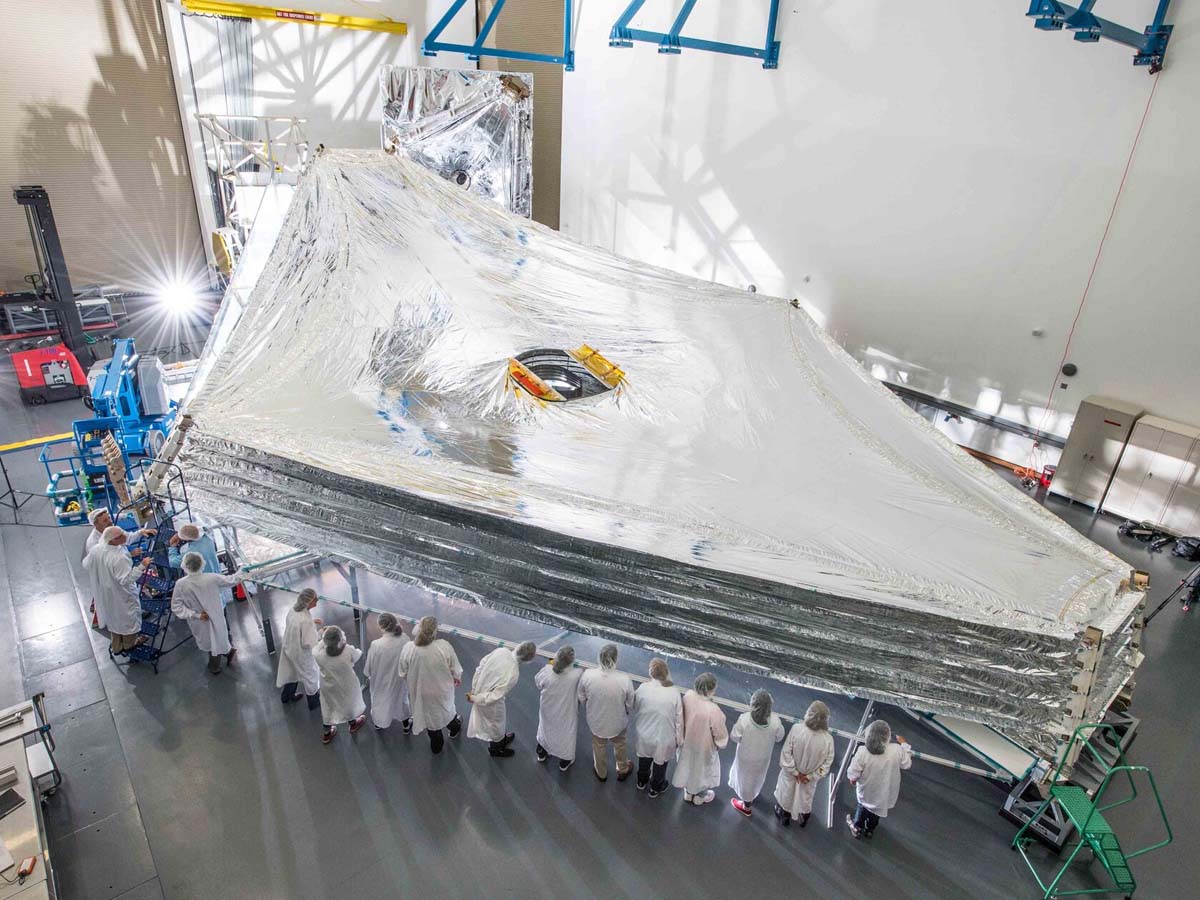
Mirrors And Their Gold Coating
The JWST's primary mirror consists of 18 hexagonal segments made of lightweight beryllium, which together form a 6.5-meter (21.3-foot) diameter surface. This mirror is significantly larger than the Hubble Space Telescope's 2.4-meter (7.9-foot) mirror, allowing the JWST to collect more light and observe fainter objects.
A crucial aspect of the mirror's design is its ultra-thin coating of gold, which improves the mirror's reflectivity in the infrared spectrum. This gold coating, measuring just a few hundred nanometers thick, ensures that the telescope can effectively capture and focus the faint infrared light emitted by distant celestial objects.
Instruments And Tools
The JWST is equipped with a suite of four cutting-edge instruments that work together to perform a wide range of scientific observations. These instruments include the Near Infrared Camera (NIRCam), the Near Infrared Spectrograph (NIRSpec), the Mid-Infrared Instrument (MIRI), and the Fine Guidance Sensor/Near InfraRed Imager and Slitless Spectrograph (FGS/NIRISS).
These tools enable the telescope to capture high-resolution images, analyze the composition and physical properties of celestial objects, and study the atmospheres of exoplanets, among many other scientific objectives. Together, these instruments make the James Webb Space Telescope an unparalleled observatory for exploring the universe in greater detail than ever before.
Launch And Deployment
Launch Date And Location
The much-anticipated launch of the James Webb Space Telescope took place on December 25, 2021, marking a new era in space exploration. The launch occurred at the Guiana Space Centre in Kourou, French Guiana, where the telescope was placed atop an Ariane 5 rocket, provided by the European Space Agency (ESA). This strategic location near the equator allowed for an efficient and energy-saving launch, taking advantage of Earth's rotational speed.
The Unfolding Process In Space
Following its successful launch, the JWST began an intricate unfolding process, which was carefully designed to ensure the safe deployment of its delicate components in the harsh environment of space. This complex sequence of events, lasting approximately two weeks, involved the extension of the telescope's sun shield, the unfolding of its primary mirror, and the alignment of its 18 mirror segments. Each step was meticulously planned and executed, as any error or misalignment could have jeopardized the telescope's ability to capture precise and accurate data.
Journey To The Lagrange 2 Point
Once the unfolding process was successfully completed, the JWST embarked on its journey to the second Lagrange point, commonly referred to as L2. Situated approximately 1.5 million kilometers (about 930,000 miles) from Earth, L2 is a stable point in space where the Earth's gravitational forces and the Sun balance the orbital motion of the telescope.
This location offers several advantages for the JWST, including a constant and unobstructed view of the sky, minimal interference from the Earth and the Moon, and a thermally stable environment. It took the telescope around 30 days to reach its destination at L2, where it now operates and continues to uncover the mysteries of the universe.
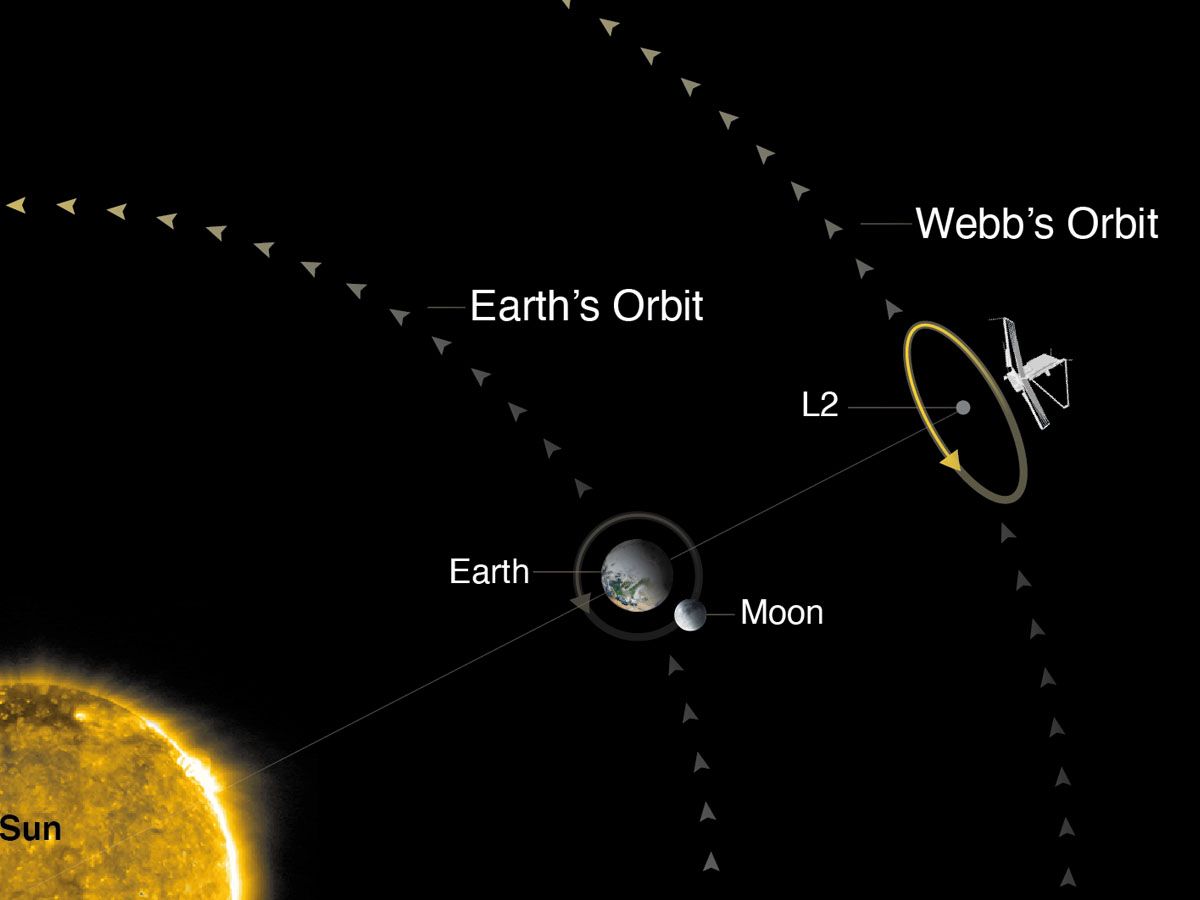
Science Objectives And Areas Of Focus
First Light In The Universe And Reionization
One of the primary objectives of the James Webb Space Telescope is to observe the first light in the universe, which occurred after the so-called "cosmic dark ages." This epoch, known as reionization, took place a few hundred million years after the Big Bang when the first stars and galaxies began to form. The JWST's powerful infrared capabilities enable it to peer back in time, capturing images of these ancient celestial bodies and shedding light on the processes that led to the reionization of the universe.
Assembly And Evolution Of Galaxies
The JWST also aims to investigate the assembly and evolution of galaxies across cosmic time. By observing distant galaxies at various stages of development, the telescope will help astronomers understand how these massive structures formed, evolved, and interacted with each other. This data will provide crucial insights into the underlying physical processes that govern the formation of galaxies, their distribution in the cosmos, and their role in shaping the large-scale structure of the universe.
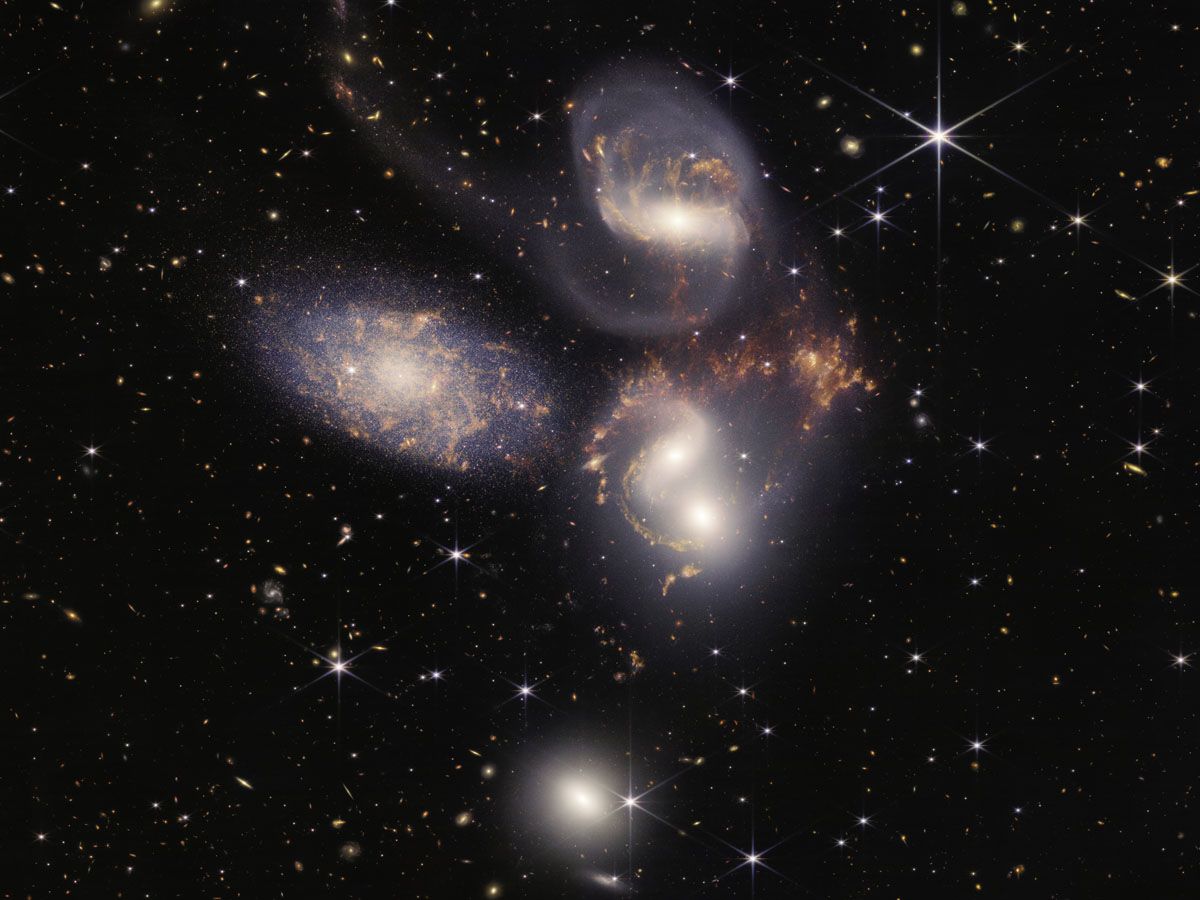
Birth Of Stars And Protoplanetary Systems
Another important area of focus for the JWST is the study of star formation and the development of protoplanetary systems. The telescope's advanced instruments will allow researchers to peer through the dusty environments in which stars are born, revealing the complex processes that govern their formation and subsequent evolution.
In addition, the JWST will observe protoplanetary disks rotating clouds of gas and dust that surround young stars providing critical information on the early stages of planetary system formation and the factors that influence their architecture.
Planets And The Origins Of Life
The JWST is also poised to revolutionize our understanding of planets and their potential to support life. By analyzing the atmospheres of exoplanets planets orbiting stars outside our solar system the telescope will help researchers determine their chemical compositions, weather patterns, and the presence of vital molecules, such as water vapor and organic compounds. This information will be invaluable in identifying potentially habitable worlds and deepening our understanding of the conditions necessary for life to emerge and thrive in the universe.
Key Milestones And Accomplishments
First Images Captured By JWST
One of the most significant milestones in the James Webb Space Telescope's mission was the capture of its first images. After successfully unfolding and aligning its mirrors, the JWST began its observations, focusing its powerful gaze on distant celestial objects. These first images served as a testament to the telescope's capabilities and marked the beginning of its scientific journey, which promises to unveil numerous cosmic mysteries and reshape our understanding of the universe.
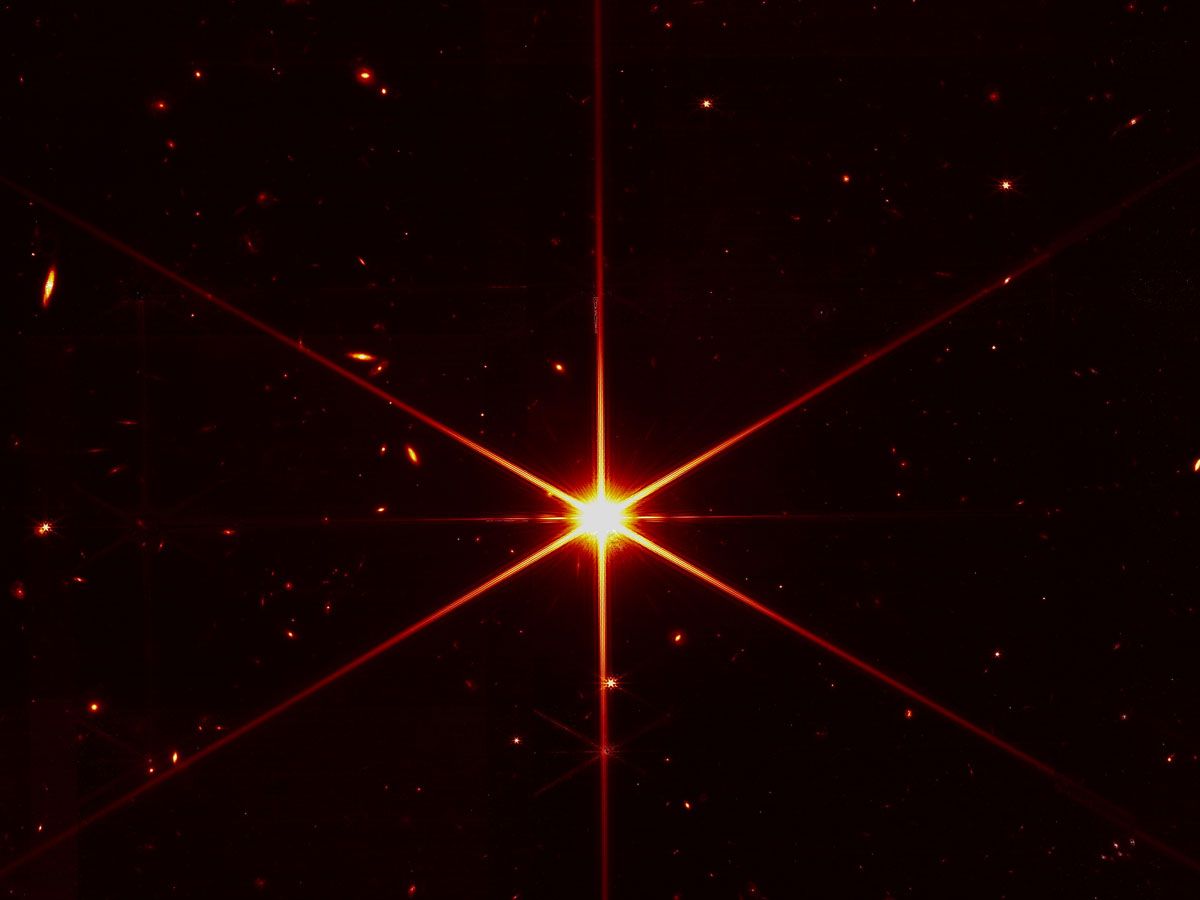
Official Release Of Science Images
The official release of the JWST's science images was another crucial milestone in its mission. These images, showcasing the telescope's unparalleled sensitivity and resolution, have provided researchers with a wealth of data to analyze and interpret. The groundbreaking discoveries made using these images have captivated both the scientific community and the general public, sparking renewed interest in astronomy and astrophysics. The release of these images has also served to demonstrate the importance of continued investment in space-based research and technological advancements.
Involvement Of International Partners And Collaborators
The James Webb Space Telescope stands as a shining example of international collaboration in the pursuit of scientific knowledge. The project involved the combined efforts of NASA, the European Space Agency (ESA), and the Canadian Space Agency (CSA), with numerous research institutions and private companies contributing to its development and success.
This global partnership has not only fostered scientific cooperation and shared expertise but has also demonstrated the power of international collaboration in overcoming challenges and pushing the boundaries of human understanding. The JWST's ongoing mission is a testament to the positive impact such partnerships can have on the scientific community and the broader quest for knowledge.
Comparison with the Hubble Space Telescope
Differences In Capabilities And Wavelength Coverage
While both the Hubble Space Telescope (HST) and the James Webb Space Telescope (JWST) are revered for their contributions to space exploration, they differ significantly in their capabilities and wavelength coverage. The HST primarily operates in the visible and ultraviolet light spectrum, while the JWST focuses on infrared wavelengths. This distinction allows the JWST to probe deeper into the cosmos, observing distant objects obscured by dust and gas, as well as enabling it to study the early universe and the formation of the first galaxies.
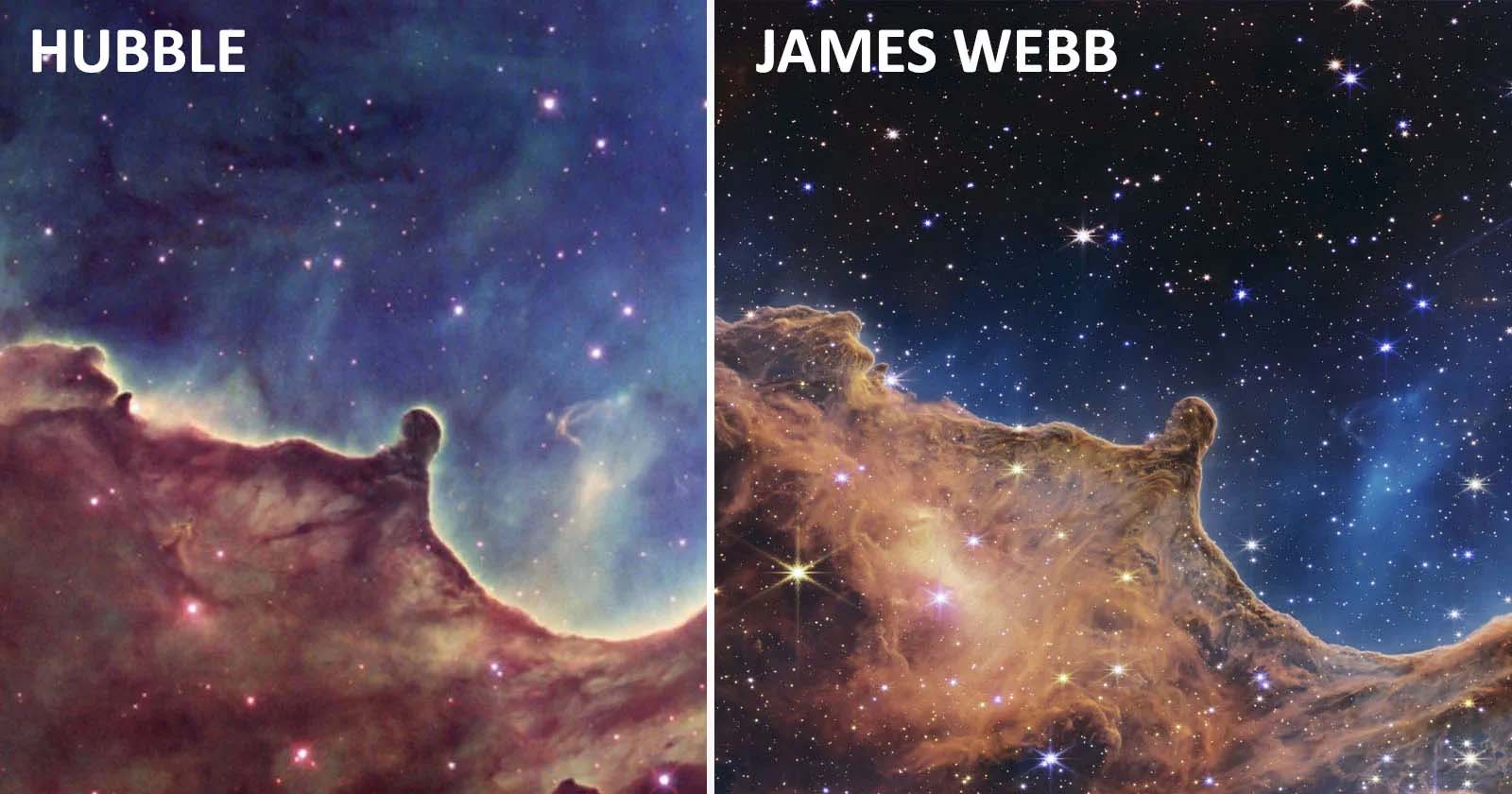
Orbit Locations And Servicing Options
Another notable difference between the HST and the JWST is their respective orbit locations. Hubble orbits the Earth at an altitude of approximately 547 kilometers, while the JWST is positioned at the second Lagrange point (L2), nearly 1.5 million kilometers away. This distance makes it impossible to service the JWST as the Hubble has been, significantly increasing the importance of pre-launch testing and reliability. The remote location, however, also shields the JWST from Earth's thermal and optical interference, enhancing its observational capabilities.
Complementary Roles In Space Exploration
Despite their differences, the HST and the JWST have complementary roles in space exploration. Hubble's continued operation in the visible and ultraviolet spectrum allows it to capture detailed images of celestial objects, while the JWST's focus on infrared wavelengths permits the study of phenomena and objects that are otherwise invisible to Hubble. Together, these two powerful telescopes contribute to a more comprehensive understanding of the universe and its many mysteries.
Challenges And Delays In The JWST Project
Technical Issues And Engineering Problems
The development of the James Webb Space Telescope has faced numerous challenges and delays, including technical issues and engineering problems. The complexity of the telescope's design, such as its innovative sun shield and folding mirror system, required extensive testing and modifications to ensure its proper functioning in the harsh environment of space. These issues contributed to an increased project timeline and elevated costs.
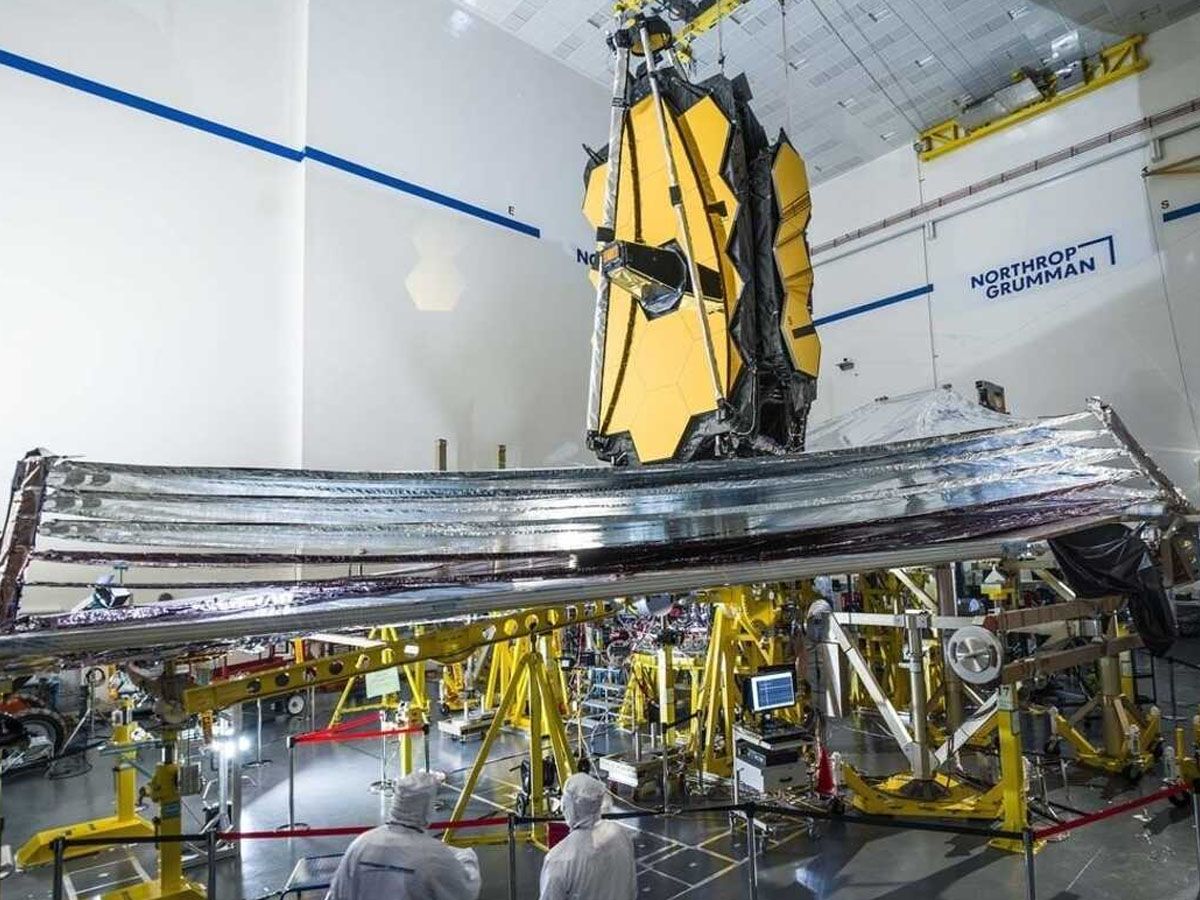
Political Hesitancy And Project Management Issues
Political hesitancy and project management issues also played a role in the delays experienced by the JWST project. As the telescope's budget ballooned, there were concerns about its feasibility and prioritization compared to other scientific endeavors. Additionally, project management challenges, including communication and coordination among various stakeholders, led to further delays and difficulties.
Effects Of The Covid-19 Pandemic On The Project Timeline
The COVID-19 pandemic further complicated the JWST project, causing disruptions in supply chains, workforce availability, and the testing and integration process. As a result, the telescope's launch was postponed several times, ultimately pushing the project's timeline further into the future. Despite these obstacles, the dedication and perseverance of the international team behind the JWST eventually led to its successful launch and deployment, marking a new era in our understanding of the cosmos.
Future Prospects And Potential Discoveries
Study Of Exoplanets And Search For Signs Of Life
One of the most exciting prospects of the James Webb Space Telescope is its ability to study exoplanets and search for signs of life beyond our solar system. Thanks to its advanced infrared capabilities, the JWST can analyze the atmospheres of exoplanets, detecting the presence of molecules such as water, methane, and carbon dioxide, which are key indicators of habitability. By examining these atmospheric signatures, scientists hope to discover potentially habitable worlds and perhaps even signs of life, revolutionizing our understanding of the prevalence of life in the cosmos.
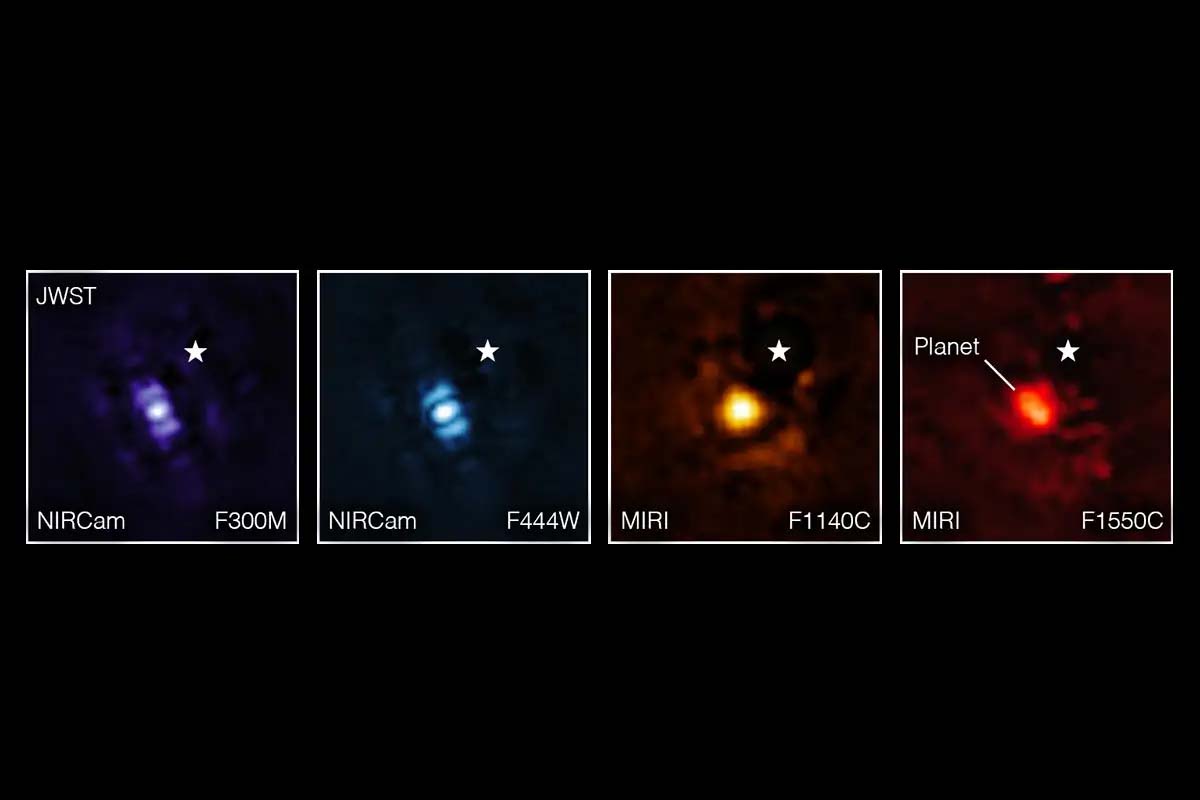
Expected Mission Life And Potential Extensions
The James Webb Space Telescope has an expected mission life of at least 10 years, during which it will carry out its scientific objectives and contribute to our understanding of the universe. However, the possibility of mission extensions exists, depending on the telescope's overall health and the availability of resources such as propellant for its thrusters. The longevity of the JWST will depend on its performance in the harsh space environment and the continued interest and support of the international scientific community.
Contributions To Our Understanding Of The Universe
The JWST is poised to make groundbreaking contributions to our understanding of the universe across a wide range of scientific disciplines. Observing the early universe and the formation of the first galaxies will shed light on the processes that led to the creation of the cosmic structures we observe today. Its study of the birth of stars and protoplanetary systems will advance our knowledge of how solar systems, like our own, form and evolve over time. Additionally, the telescope's exploration of exoplanets and the search for signs of life will provide invaluable insights into the potential for life beyond Earth. Ultimately, the JWST's discoveries will not only enhance our knowledge of the universe but also help us answer fundamental questions about our place in the cosmos.
Sources: nasa.gov / space.com / asc-csa.gc.ca / esa.int
